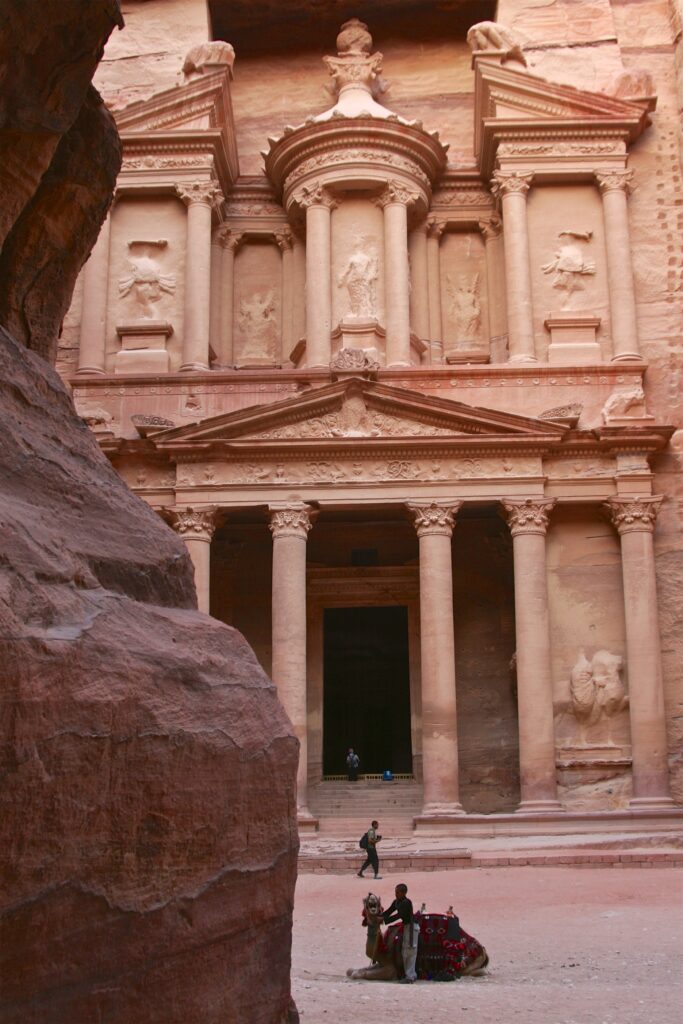Choosing the optimal time to visit Jordan is crucial for a memorable travel experience in the country. Jordan, located in the Middle East and close to Egypt and Israel, offers both valley and desert regions, as well as remarkable historical monuments and archaeological sites. Many people are unaware that Jordan also boasts beautiful beaches, excellent dive sites, and top nature reserves that provide hiking and camping opportunities. Whether you are a history enthusiast or a nature lover, there is plenty to explore in this country that should not be missed. Continue reading to discover the best time to visit Jordan and start planning your trip to this incredible country today.
The overall best time to visit Jordan is during the spring or autumn seasons, which include the months of April, May, June, September, and October. If you plan to explore various parts of the country, such as the coast, Amman, the Dead Sea, the Dana Biosphere Reserve, Petra, and Wadi Rum, these months provide the best opportunities for pleasant weather and reasonable temperatures.

Visiting during these months ensures that you won’t be overwhelmed by scorching heat and minimizes the chances of encountering rainy and cloudy days. While it may be tempting to visit during the hottest summer months, it is important to note that the temperatures can be uncomfortably high, especially in the desert areas that cover large parts of Jordan. Therefore, opting for the spring and autumn months, particularly April, May, and September, is the best choice for those interested in sightseeing, sunbathing, floating on the Dead Sea, camping in Dana, and immersing themselves in the historic sights.
If you plan to visit Jordan in the spring, it is essential to be aware of the holy month of Ramadan, which usually falls in April. Ramadan is a significant Islamic festival that lasts for one month, and its dates change each year. While visiting Jordan during Ramadan is still possible, it is important to respect the local customs and refrain from eating in public during the day. Additionally, some disruptions to services, opening hours, and transportation may occur. However, after dark, the streets come alive in Jordan during Ramadan, as cafes and restaurants fill with people breaking their fast and enjoying social gatherings late into the evening.
Considering the weather and climate in Jordan is also important when planning your visit. Jordan is a relatively small country with a population of just over 11 million. It has a slender coastline along the Gulf of Aqaba but is otherwise landlocked by nations like Syria, Iraq, and Saudi Arabia. This geographical aspect contributes to Jordan’s arid climate. Amman, the capital of Jordan, is located about 150km from the Israeli city of Tel Aviv on the coast, and the weather patterns in this part of Jordan are influenced by their proximity to both the Mediterranean Sea and the Fertile Crescent.
Consequently, this region experiences colder, wetter winters and very hot, dry summers. On the other hand, the eastern parts of Jordan, which are closer to the Arabian Peninsula, are drier with higher daytime temperatures throughout the year. Most tourists tend to explore the western strip of Jordan, where Amman, Jerash, the Dead Sea, Wadi Rum, Petra, and Aqaba are located. Therefore, when researching the best time to visit Jordan, it is crucial to consider the weather patterns in this part of the country.

The hottest months in Jordan are July and August, with daytime temperatures regularly exceeding 35 degrees Celsius (95 degrees Fahrenheit) and sometimes reaching 45 degrees Celsius (113 degrees Fahrenheit) on the coast. Exploring the ancient sights of Jordan under the scorching sun without shade can be unpleasant, which is why these summer months are not recommended for visiting the country.
Conversely, January and February are the coldest months, with temperatures hovering around 15 degrees Celsius (59 degrees Fahrenheit) in many locations and dropping even lower in desert regions at night. This means that visiting Petra in the early morning or camping in Wadi Rum would be extremely cold during these months, making winter an unfavorable time to visit Jordan.
Petra and Wadi Rum, both located in arid areas in the southwest of Jordan, attract the most visitors during the spring and autumn months, especially in April, May, September, and October. During these times, there is a favorable balance of weather conditions, with dry and long days, warm daytime temperatures, and comfortable nighttime temperatures. These months are generally regarded as the best time to visit Petra and Wadi Rum.
However, it is important to note that these periods also bring higher prices and larger crowds. If you are seeking solitary shots of Petra and a unique experience in this desert city, visiting during the winter months can be a great idea, although you should be prepared for extremely cold weather. Camping in Wadi Rum is not recommended during the winter, so it is advisable to visit in late autumn (November) or early spring (March) for a more uncrowded experience.

To provide a month-by-month guide for when to visit Jordan:
– January: This is one of the coldest and wettest months in Jordan. Only the desert during the day and the coast offer warm temperatures. January may be suitable for capturing photos of Petra without crowds or participating in indoor cooking classes and cultural workshops, but overall, it is not an ideal time to visit.
– February: Temperatures slightly warm up in February, but it is still winter in Jordan, with short days and cold evenings. Rainfall is also relatively high, so it is essential to bring waterproof clothing and warm layers. However, if you prefer lower crowds and better prices for accommodation, February can be a good choice.
– March: Spring arrives in Jordan in March, and the days become fresh and pleasant across much of the country. The desert is mild, and tourist numbers are low, making March an excellent time to visit popular places like Petra without encountering crowds. Additionally, wildflowers begin to bloom in March, making it a great time for hiking in the valleys. However, nighttime temperatures can still be chilly.
– April: This is the first month recommended as the best time to visit Jordan. Temperatures are around 23 degrees Celsius (73 degrees Fahrenheit) across the country, providing a great opportunity to enjoy warm weather as the days lengthen. It is important to check the dates of the holy month of Ramadan and Eid al-Fitr, as they can affect trip planning. April is also a peak month for visiting Jordan, so prices will be at their highest.
– May: May is an excellent month to visit Jordan, with long and sunny days. The coast offers warm and sunny weather, while sightseeing is perfect with comfortable temperatures and clear blue skies. The desert is still enjoyable, with temperatures reaching highs of 28 degrees Celsius (82 degrees Fahrenheit).
Overall, the best time to visit Jordan is during the spring or autumn months, particularly April, May, June, September, and October. These months provide a favorable balance of weather conditions and offer the best opportunities for sightseeing, outdoor activities, and enjoying the country’s historical and natural wonders. However, it is important to consider factors such as the holy month of Ramadan and the specific weather patterns in different regions of Jordan when planning your visit. By carefully selecting the time of your trip, you can ensure a fantastic travel experience in Jordan.








